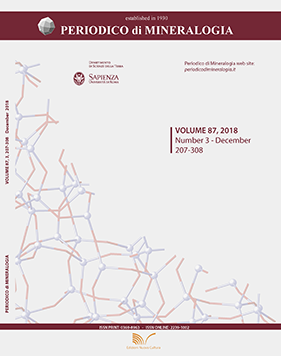Syn-shearing mobility of major elements in ductile shear zones: state of the art for felsic deformed protoliths
DOI:
https://doi.org/10.2451/2018PM811Keywords:
ductile shear zones, felsic rocks, major element mobility, fluid-flux, fluid sources, fluid-rock interactionAbstract
The mineral assemblages of ductile shear zones, acting as opensystems, may be strongly influenced by the occurrence of mass transfer
processes induced by channeling H2O-rich fluids and mobilizing major
elements. In this respect, the mineralogy of ductilely sheared felsic
rocks under metamorphic conditions is believed to be controlled mainly
by the following variables: the infiltrated fluid fluxes, the
thermobaric deformation conditions of felsic rocks, the tectonic
context and the likely fluid source. To investigate the presence of
common features regarding the gain and loss of mobilized major
elements with respect to these variables, a review of literature case
studies dealing with felsic sheared protoliths has been undertaken.
Qualitative results suggest that: (i) the mobilization of preferred
major elements seems not related to fixed values of time-integrated
fluid flux; (ii) no general relations exist between the mobility of
major elements and the tectonic context for shearing, with some
exception; (iii) H2O, K, Ca, Na, Mg, Si and Fe exhibit the greatest
mobility whatever P-T metamorphic conditions; (iv) fluids coming from
far-field and near-field sources induced a some preferred mobility of
major elements within ductile shear zones; (v) the chemical selection
of major elements seems greatly related to the fluid chemistry, while
the amounts of fluids seems only to drive at completion the
metamorphic fluid-rock reactions within ductile shear zones.


